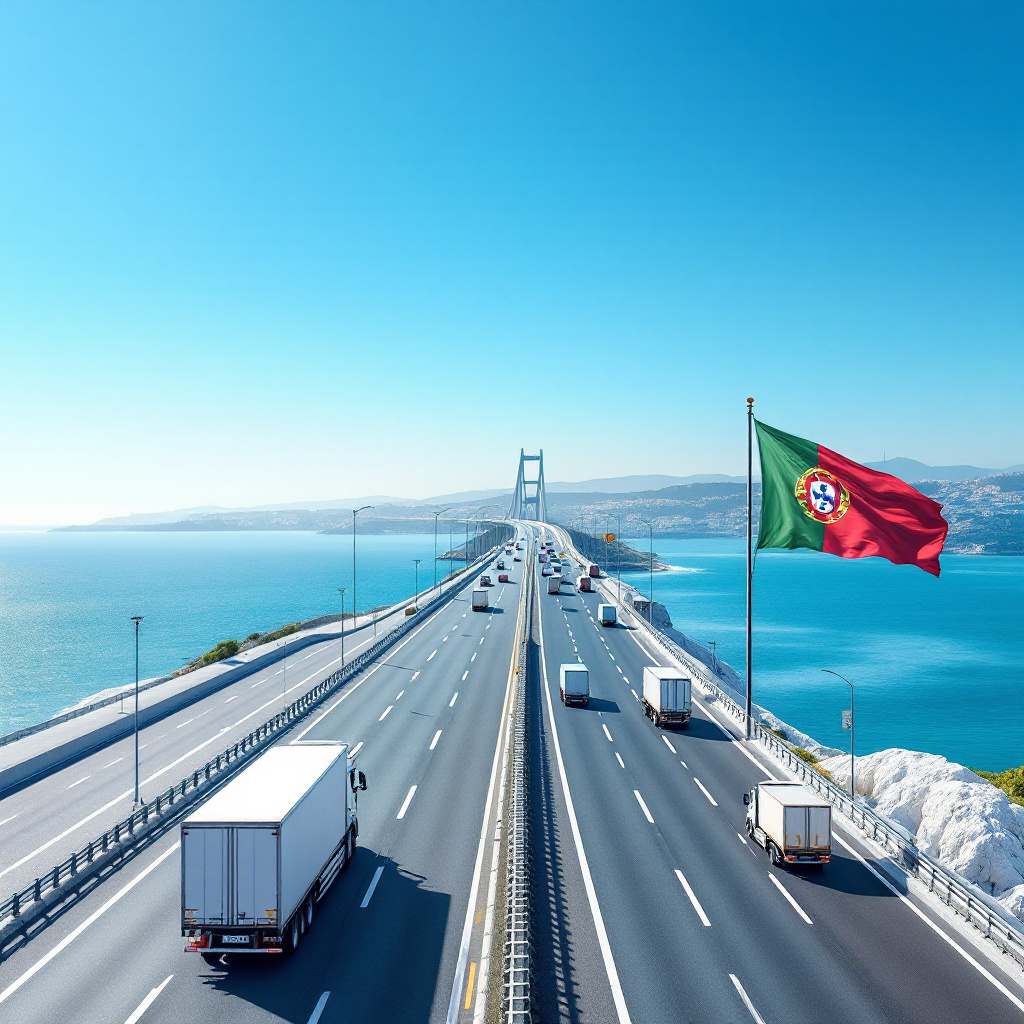The Lisbon – Setúbal: Distance and its logistical significance make it a crucial transportation corridor in Portugal. The 50-kilometer route ensures quick and convenient travel. On average, the drive takes 40–45 minutes, depending on road conditions and traffic flow. As a vital logistics link, it connects the capital with a significant port and industrial hub in southern Portugal, supporting both passenger and cargo movement.
City Overview
Lisbon is the capital and largest city of Portugal, serving as its economic and cultural hub. It has a well-developed transport network, including an international airport, a seaport, rail connections, and modern highways, making it a key logistics center. The city also attracts significant international investment as a financial and technological hub.
Setúbal is an industrial and port city on the Atlantic coast. Known for its fishing industry, shipbuilding, and exports, it relies on the Port of Setúbal, one of Portugal’s largest. The port handles both containerized and bulk cargo, supporting automobile, agricultural, and petroleum exports. Additionally, Setúbal benefits from the chemical and pharmaceutical industries, as well as a thriving tourism sector.
Lisbon – Setúbal: Distance and Main Transport Routes
Key routes between Lisbon and Setúbal include:
- A2 (Autoestrada do Sul) – The main highway, providing the fastest route in 40 minutes.
- IC1/N10 – An alternative route through smaller towns, useful for flexible transportation needs.
- Ponte 25 de Abril – A critical bridge over the Tagus River connecting Lisbon to southern Portugal.
- Ponte Vasco da Gama – An alternative bridge that helps ease congestion.
- Fertagus Railway Line – A fast and efficient rail connection for both passengers and cargo transportation.
Logistics Features of the Route
1. Developed Road and Rail Infrastructure
The A2 highway has modern interchanges, service stations, and rest areas, ensuring safe travel. Additionally, the Fertagus railway facilitates both passenger and cargo transportation, benefiting industries that rely on rail container shipments.
2. Significance for Transportation
This route is vital for logistics and supply chains. Among the key transported goods are:
- Seafood and agricultural products
- Industrial goods and raw materials
- Petroleum products and construction materials
- Automobiles and components (Setúbal’s port is a major export hub)
- Pharmaceutical and chemical products
3. Road Conditions and Traffic
The road quality is excellent. However, congestion during peak hours may lead to delays, particularly when departing from Lisbon. Traveling outside rush hours minimizes disruptions. Infrastructure improvements and Intelligent Transport Systems (ITS) help enhance traffic flow and reduce bottlenecks.
4. Environmental Considerations
Portugal is actively promoting eco-friendly transport. The use of electric trucks and hybrid vehicles is increasing along this route. Additionally, companies are implementing routing technologies to optimize logistics and reduce CO₂ emissions. Encouraging more transportation via rail also helps alleviate highway congestion.
Economic Importance of the Lisbon – Setúbal Corridor
This route is crucial to the regional economy, linking Lisbon with major industries such as the Port of Setúbal, automobile plants, and petrochemical complexes. Many international businesses rely on this corridor for trade. Ongoing investments in transport infrastructure continue to boost its efficiency and attractiveness for commerce.
Conclusion
The Lisbon – Setúbal: Distance and its logistical role make this one of Portugal’s most significant transport links, ensuring seamless connectivity between the capital and a major industrial region. Its strong infrastructure and strategic location make it indispensable to the country’s logistics network. Continuous road and rail enhancements, along with sustainable transport initiatives, ensure its ongoing reliability for both passengers and cargo transportation.


